Although the two main materials of The Dinner Party are ceramic and textile, a closer examination reveals the work is actually composed of a myriad of materials. Many of these varied elements, well over one hundred, are found as embellishments on the 39 place setting runners. For example, animal skins (calfskin, snakeskin, and deerskin) are used in the Primordial Goddess, Amazon, and Sacajawea runners. Kidskin leather is used for the shoes in the male figure in Mary Wollstonecraft. Metals are used on several runners: titanium to represent the axe blades incorporated into Amazon’s runner, while coins of 14-gauge sheet metal are sewn onto the runner for Judith, and the runner for Boadaceia has enameled copper metal attached. Glass beadwork is used on the runners for Judith, Sacajawea, and Natalie Barney. Shells, bone needles, and starfish are incorporated onto the Fertile Goddess runner. White pearls are sewn onto the runner for Elizabeth R. and carved wood is glued to the Saint Bridget runner. Acrylic paint and wooden stretcher bars are components of the Georgia O’Keeffe runner. Even the textile components are made from a variety of natural fibers, including cotton, wool, silk, linen, horsehair, and cotton/linen blends, as well as some synthetic fibers.
The wide range of materials, both organic and inorganic, which make up The Dinner Party, present challenges for the preservation of this work while on long-term exhibition.
Environmental Factors
The environmental factors that were considered when planning the new exhibition space included light exposure, temperature, relative humidity, and air quality.
Gallery Lighting
Most of the organic components of The Dinner Party (textiles, silk, lace, some of the dyes and colorants, fur, leather, wood, and bone) are susceptible to damage from light exposure while the ceramics, metals, and other inorganic materials are not. Exposure to light can cause textile fibers to degrade, resulting in brittle and weakened fabrics as well as visible yellowing. Silk and wool fibers are especially susceptible to degradation by light. Light exposure can also cause a color shift or fade many of the colors and dyes used in the textiles and embroidery threads. Note, for example, the once red fringe on the Susan B. Anthony runner now faded to dark pink.
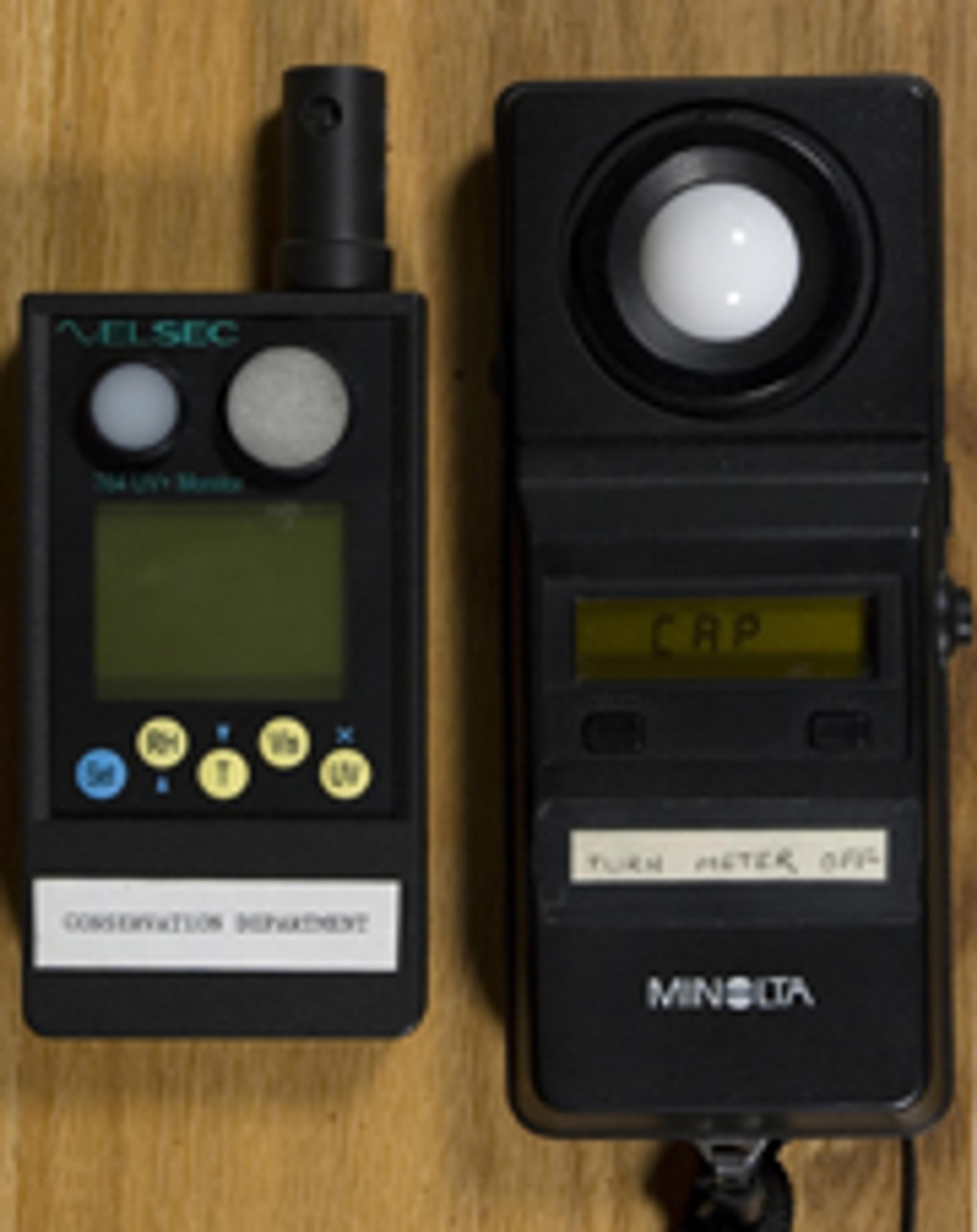
The damage caused by light exposure is cumulative and irreversible, but there are a number of ways in which the Museum can control and slow down the degradation of light-sensitive materials. As The Dinner Party is on long-term exhibition a number of safeguards were incorporated into the lighting of the work. Exhibition lighting is set at a low level of illumination and audience activation sensors installed in the gallery allow the light to remain off when there are no visitors, thus preventing unnecessary exposure. Through the use of special filters, all ultraviolet radiation has been eliminated from the light sources used in the installation. The creative lighting design maximizes the viewer’s visual perception while minimizing the deteriorating effect of light.
Temperature and Relavite Humidity
The climate within the Elizabeth A. Sackler Center for Feminist Art has been carefully considered to meet the needs of the varied elements and materials of The Dinner Party. High levels of humidity encourage insect infestation and the growth of mold, as well as increase the rate of fading. A low level of moisture often causes embrittlement in paper and textiles. Many of the organic materials (textiles, wood, paper, bone, leather, and skin) in The Dinner Party are “hygroscopic,” i.e., they will swell with increased moisture levels and shrink with decreased moisture. The expansion and contraction of “hygroscopic” materials in response to fluctuations of relative humidity is extremely damaging. A critical factor for preservation is maintaining the relative humidity within an acceptable range while preventing rapid increases or decreases.
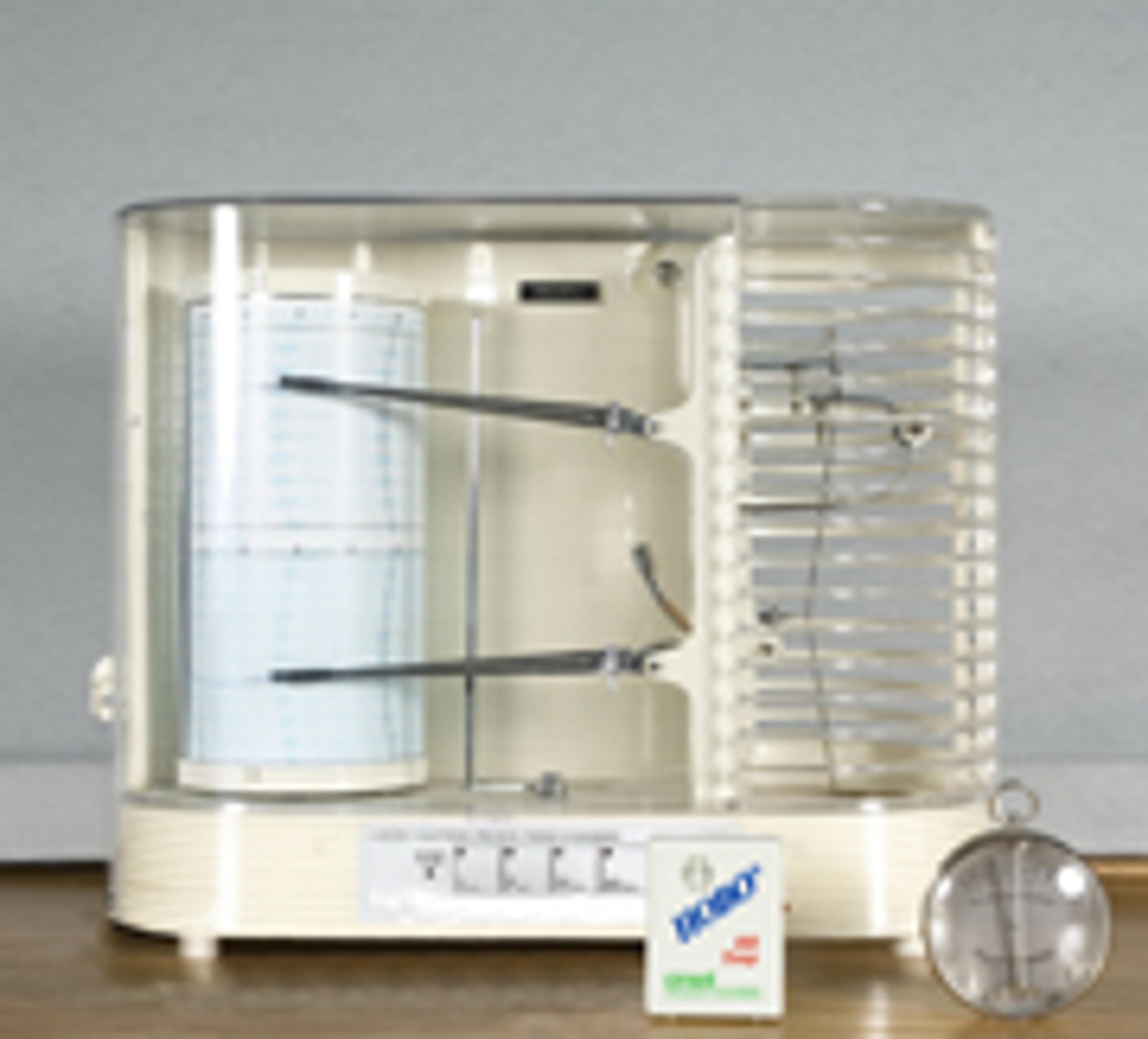
Air Filtration
In addition to regular vacuuming of the textiles while they are on display, a “clean” room is critical to prevent a build-up of ingrained soiling of the fabrics when displaying textiles on long-term exhibition. Air pollution can have a detrimental effect on all the materials in The Dinner Party. Acidic pollutants aid in the hydrolysis (breakdown) of textiles, the corrosion of metals and ceramics, and the deterioration of leather. Air pollutants are generated not only by sources external to the Museum, but by internal sources as well. Particulate pollution such as soot, dust, fibers, pollen, and soil are airborne and are generated both outside and inside the Museum. External environmental pollution is mainly from sources of transportation and industry (sulfur dioxide and nitrogen dioxide). Within a Museum setting, various wood products, carpeting, flooring materials and adhesive can all emit harmful volatile pollutants such as formaldehyde, and nitric and acetic acids. Pollutants in the form of hair, clothing fibers, dander, and dust are also carried into the Museum by staff and visitors.
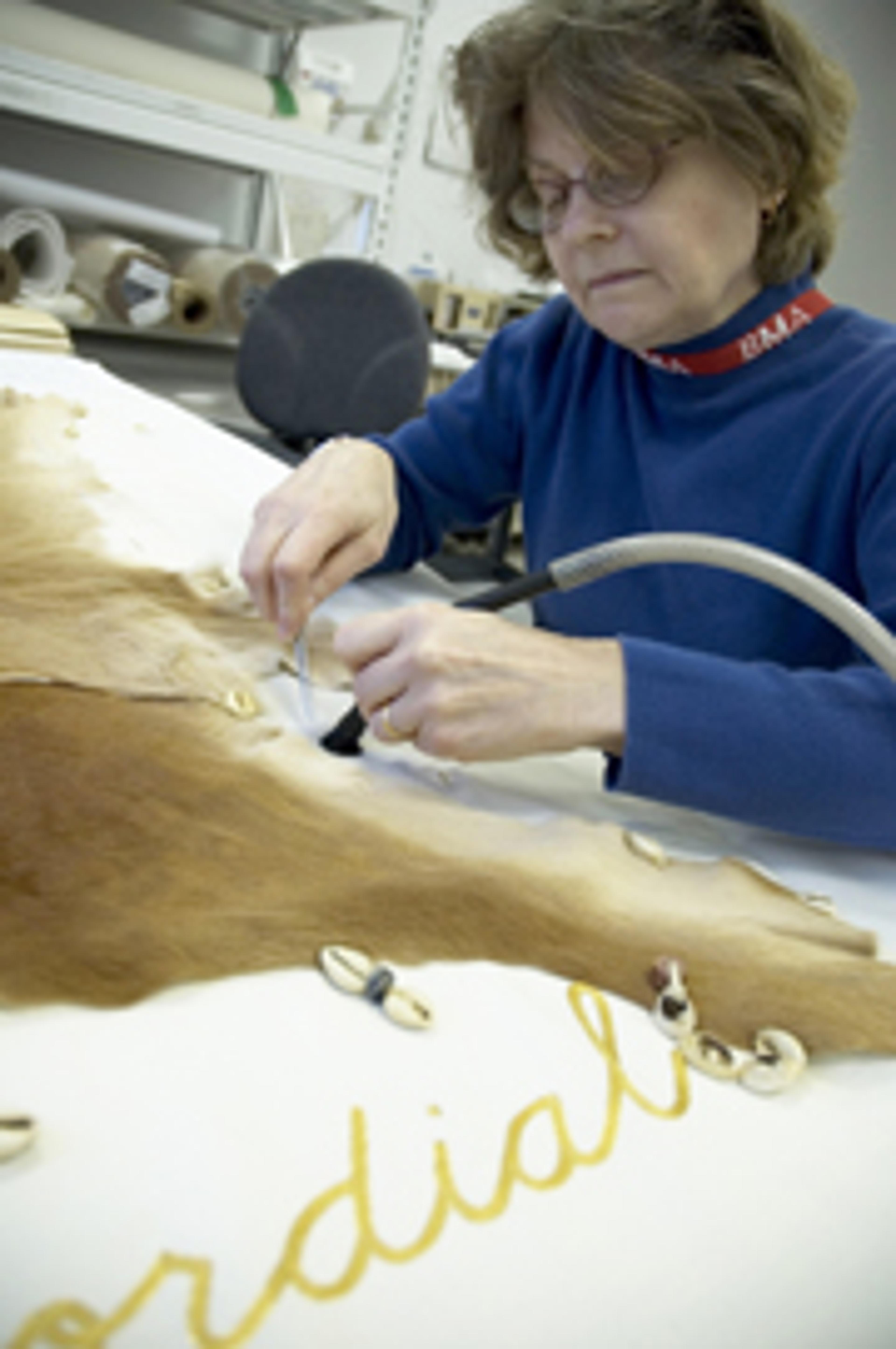
In designing the ideal environment, the construction materials used in The Dinner Party space were reviewed and if necessary, tested for harmful volatile components to ensure that little pollution was generated from inside the gallery space. Environmental engineers incorporated a number of precautions into the Museum’s air filtration system, which mitigate air pollution. All air coming from the outside passes through both gaseous and particulate filters. These filters remove at least 95% of the particulates and reduce gaseous pollutants to extremely low levels. Filtered air is introduced from the ceiling, while the air return vents are located in the outer galleries. This arrangement creates an unnoticeable airflow that discourages any particulates and gaseous pollutants generated within the space or introduced by gallery visitors from depositing on or near the artwork.
Without a doubt the exhibition environment plays a large role in the overall preservation of art, especially when on long-term display. Conservators, curators, architects, lighting designers, and engineers have worked together to create an environment ideally suited to the preservation and display needs of this monumental and complex work of art.
Preservation History
A History of Preservation
The Dinner Party's preservation efforts began with its construction. Judy Chicago and the many artisans and needleworkers who helped her create The Dinner Party made every effort to choose the most stable materials possible. Before being incorporated in the work, proposed samples of textiles and threads were often tested for color fastness, for shrinkage or distortion, and for changes to surface quality.
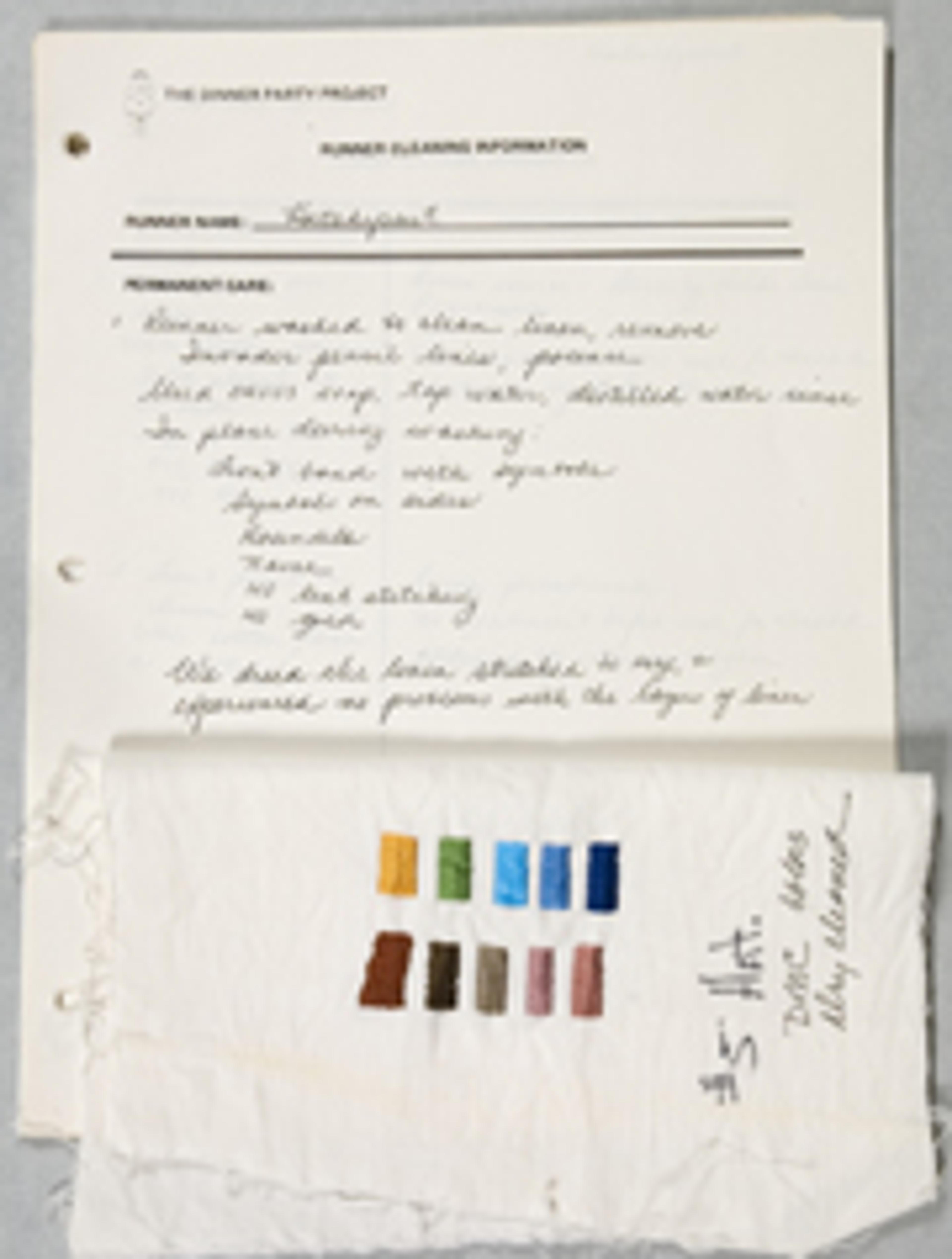
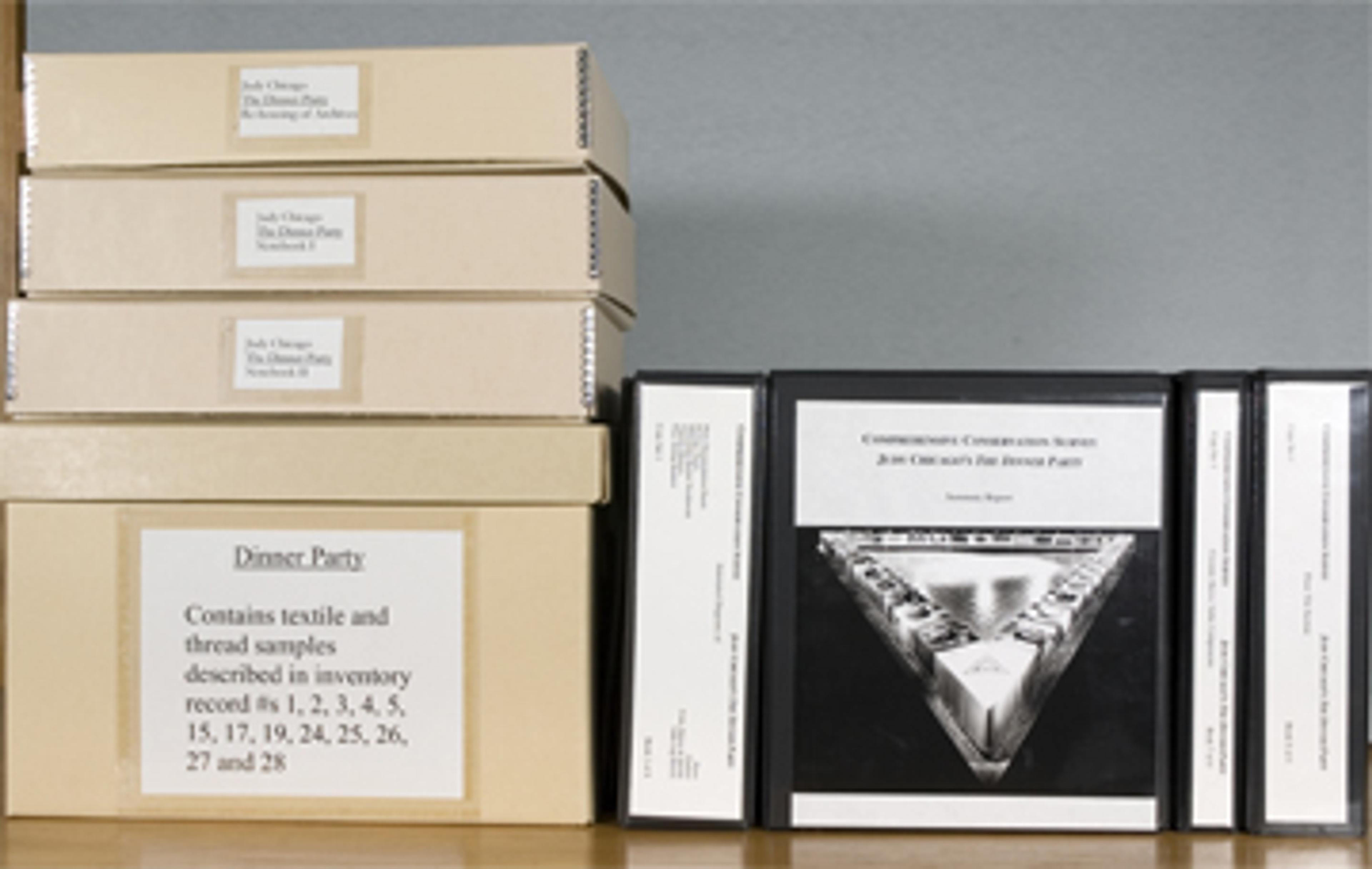
In 1996, in preparation for an installation in Los Angeles, the textile portion of The Dinner Party (the 39 place setting runners, the Millennium runners, the tablecloths, and the Entry Banners) received conservation treatment. In 1997, with a grant from the Getty Grant Program, a team of conservators with specialties in paper, photographs, paintings, objects, and textiles examined the components of the entire Dinner Party. The resulting survey report of 8 notebooks provides a technical description of all the components, their existing conditions, and recommendations for treatments.

In 2002, the Conservation Department of the Brooklyn Museum, having received the archive material as well as the Getty Conservation Survey, also examined and documented the condition of The Dinner Party and issued proposals for the installation environment and future treatment needs. In preparation for the long-term installation, the Museum undertook a treatment program to stabilize and clean all the textiles and ceramics. The textiles were cleaned with vacuums and special attachments to remove ingrained soiling. Existing thread and fabric samples from the archived records were compared against each of the original runners. There appears to be no apparent difference between the two, indicating little color change in most of the works.
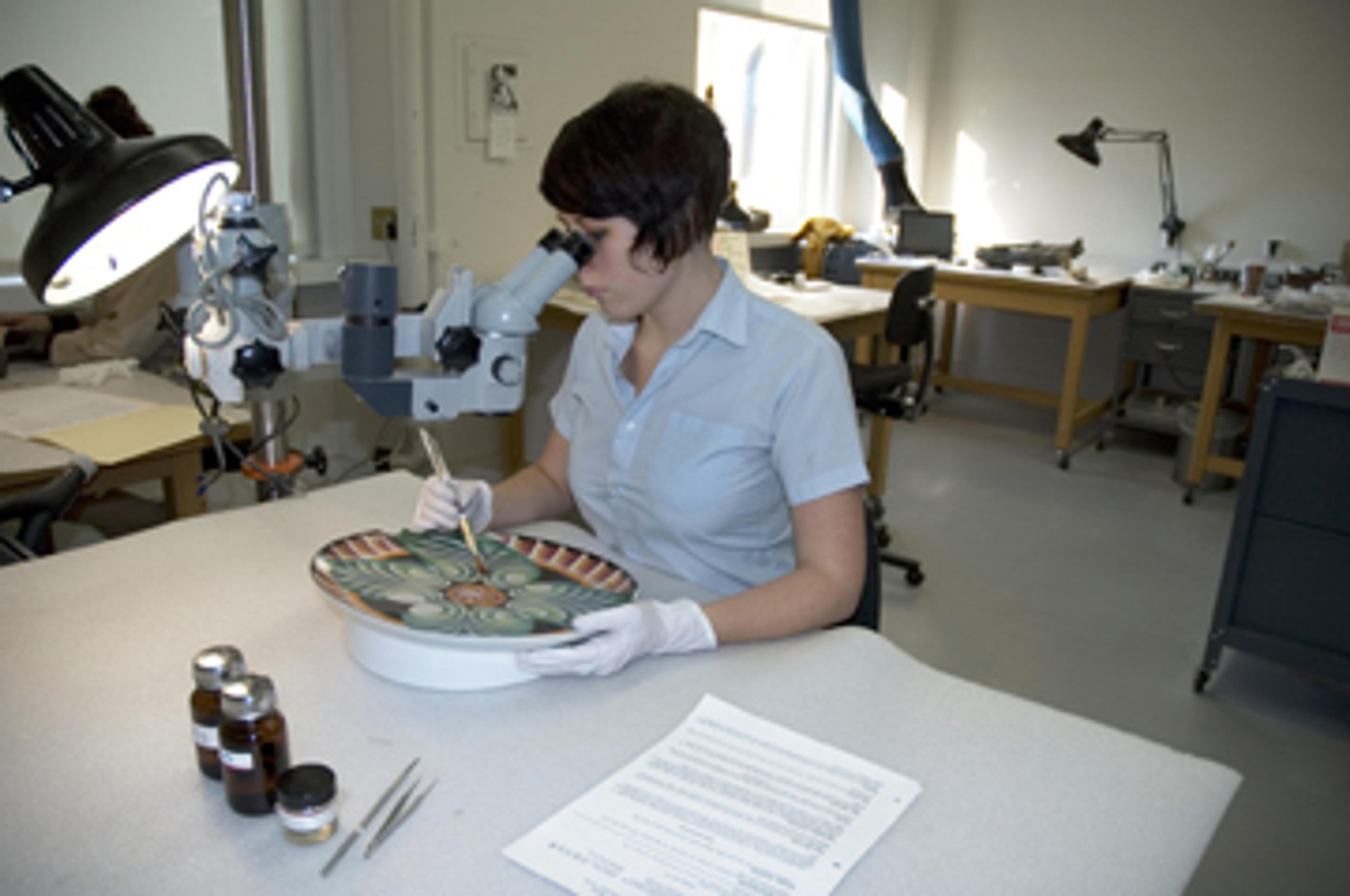
The ceramic elements (Heritage Floor tiles, the utensils, the chalices, and the plates), which are subject to changes in condition from handling and dust, were treated and cleaned. For this installation, consolidation (the re-securing of paint or glazes to their support) was undertaken for some of the plates. Most of the details on the plates are applied using overglaze enamels, made from low-fire glazes, whereas some of the details are made using paint. Both are liable to flake off the ceramic surface.